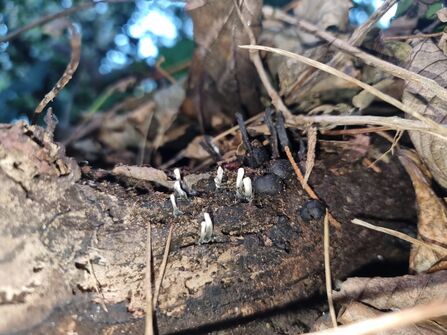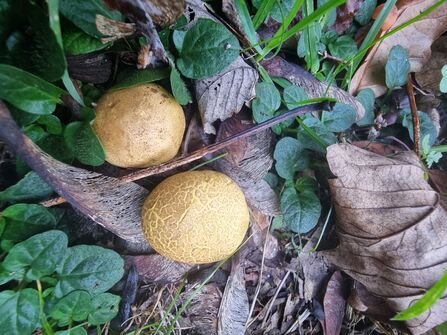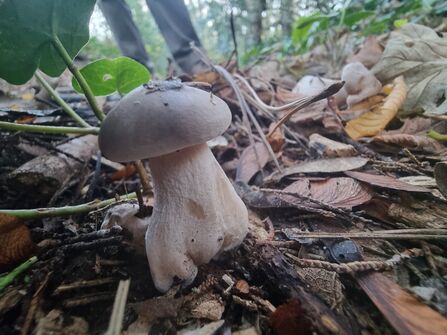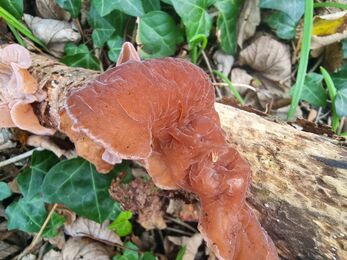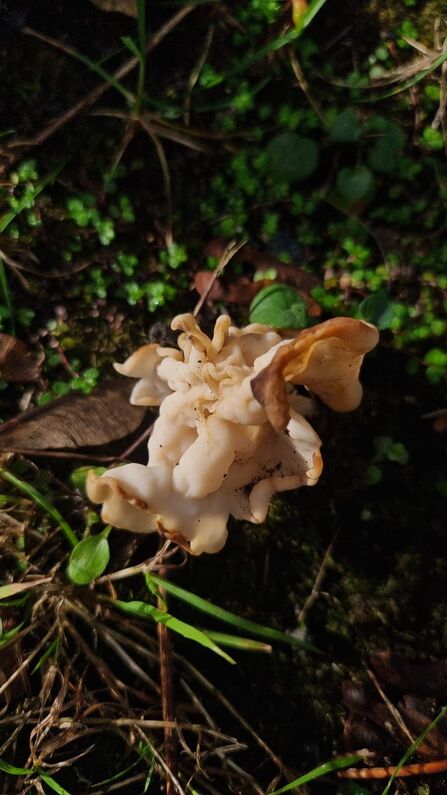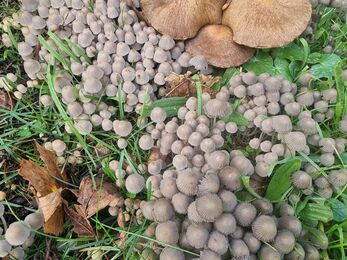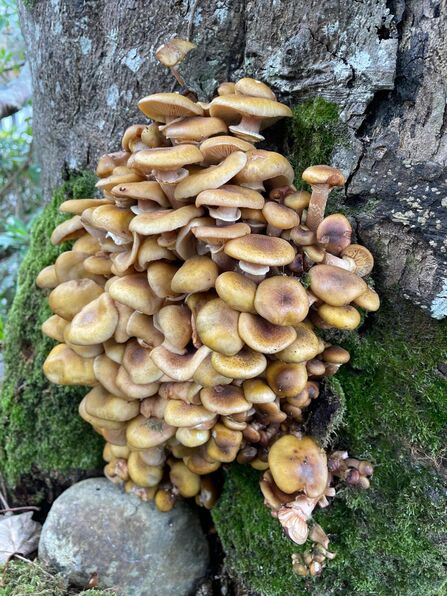
Honey fungus (photo taken in Ireland) / Thanh Doan
However, the relationship between a few fungi and trees can be a rather win-lose situation. Some fungi invade an already weakened tree, pushing the tree towards its demise. Others can kill healthy plants. For example, Honey fungus (Armillaria mellea) and its relatives can damage herbaceous and woody perennials such as birch, beech, apple, pear, rose, and willow. The fungus can cause dieback, pale foliage, an absence of flowers, cracking bark, and eventual death of the affected plants. In gardens, Honey fungus can be a major threat (to cultivated plants), but in the wild it usually causes fewer problems because it is competed against by other fungi.








